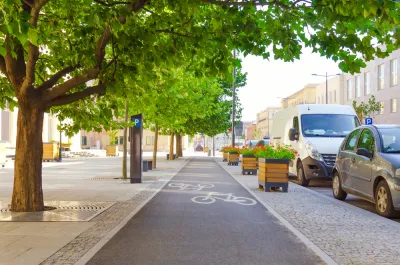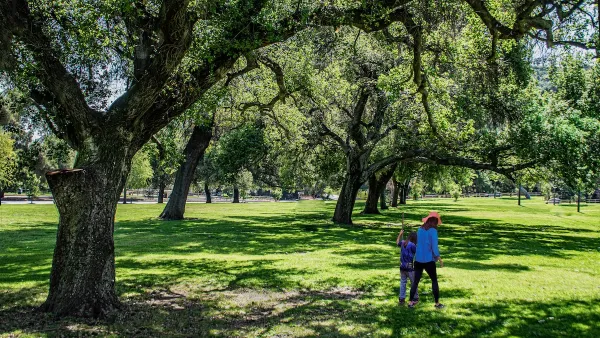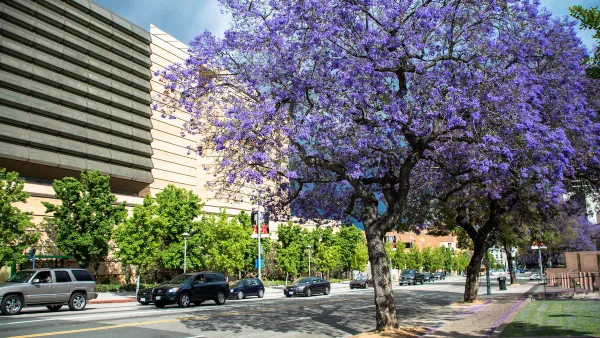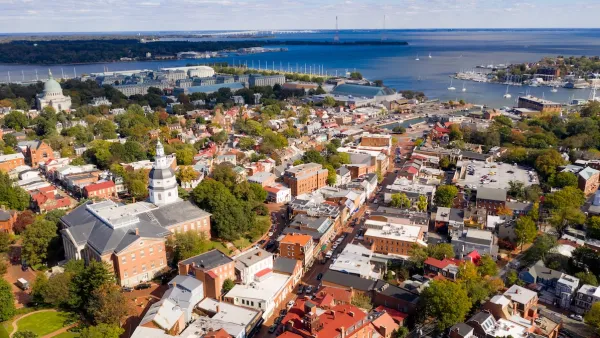New research shows a strong connection between a healthy urban tree canopy and lowered mortality rates.

It’s no surprise that street trees benefit public health, but a new study shows a “direct statistical connection” between street trees and reduced mortality rates. Robert Steuteville explains the research in an article for Congress for the New Urbanism.
To be sure, association is correlation, and correlation is not causation. And yet the study controlled for such factors as race, education, income, age, and year of planting in the analysis of tree plantings and people in Portland, Oregon, census tracts. Importantly, researchers were able to control for demographic causes for the health benefits, which strengthens the case for street trees being a critical factor.
Important findings include that “Tree plantings were significantly associated with reductions in non-accidental and cardiovascular mortality,” with bigger, older trees having a stronger connection than younger ones.
The study focused on street trees rather than trees in private gardens, which are easier to monitor, are “a uniquely visible type of tree that, a priori, we would expect to have a broader neighborhood-level impact on health,” and can be planted through public initiatives.
FULL STORY: The life-saving benefits of street trees

National Parks Layoffs Will Cause Communities to Lose Billions
Thousands of essential park workers were laid off this week, just before the busy spring break season.

Retro-silient?: America’s First “Eco-burb,” The Woodlands Turns 50
A master-planned community north of Houston offers lessons on green infrastructure and resilient design, but falls short of its founder’s lofty affordability and walkability goals.

Delivering for America Plan Will Downgrade Mail Service in at Least 49.5 Percent of Zip Codes
Republican and Democrat lawmakers criticize the plan for its disproportionate negative impact on rural communities.

Test News Post 1
This is a summary

Test News Headline 46
Test for the image on the front page.

Balancing Bombs and Butterflies: How the National Guard Protects a Rare Species
The National Guard at Fort Indiantown Gap uses GIS technology and land management strategies to balance military training with conservation efforts, ensuring the survival of the rare eastern regal fritillary butterfly.
Urban Design for Planners 1: Software Tools
This six-course series explores essential urban design concepts using open source software and equips planners with the tools they need to participate fully in the urban design process.
Planning for Universal Design
Learn the tools for implementing Universal Design in planning regulations.
EMC Planning Group, Inc.
Planetizen
Planetizen
Mpact (formerly Rail~Volution)
Great Falls Development Authority, Inc.
HUDs Office of Policy Development and Research
NYU Wagner Graduate School of Public Service





























